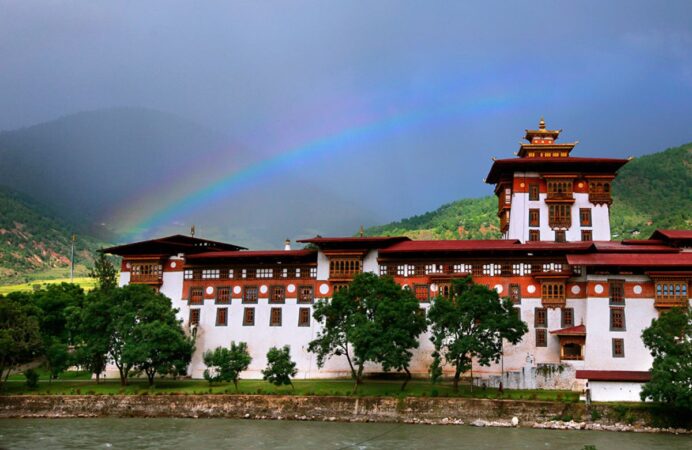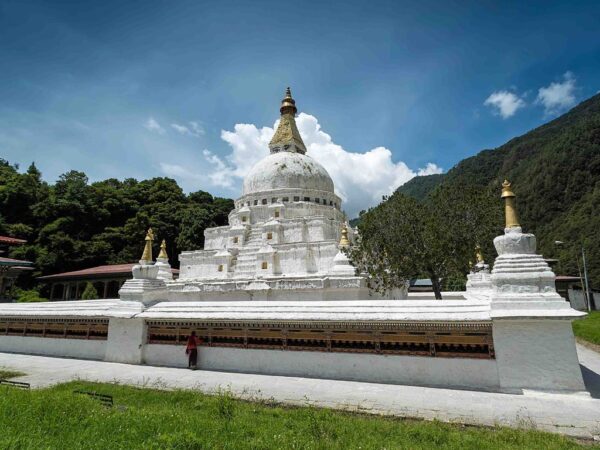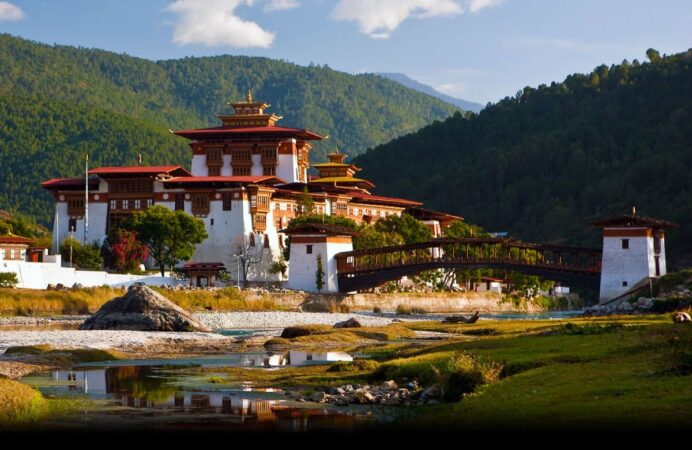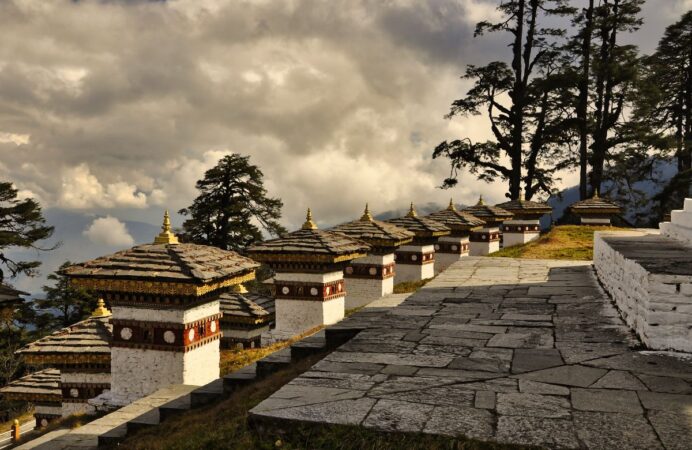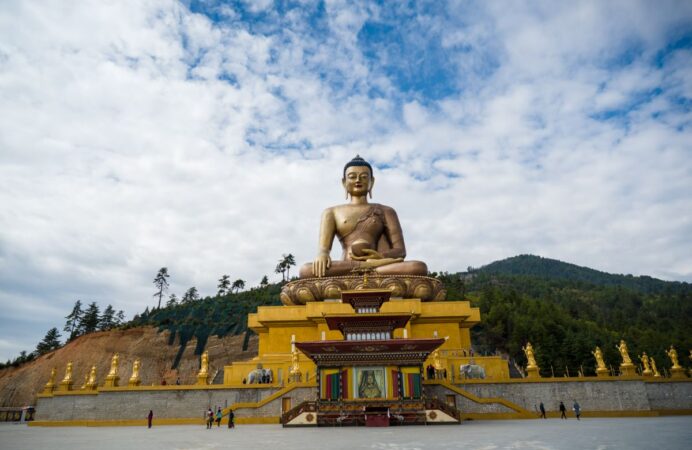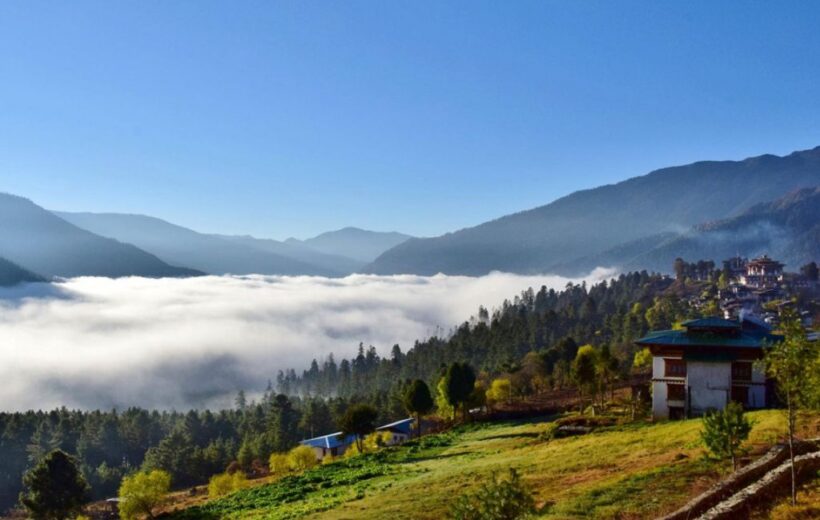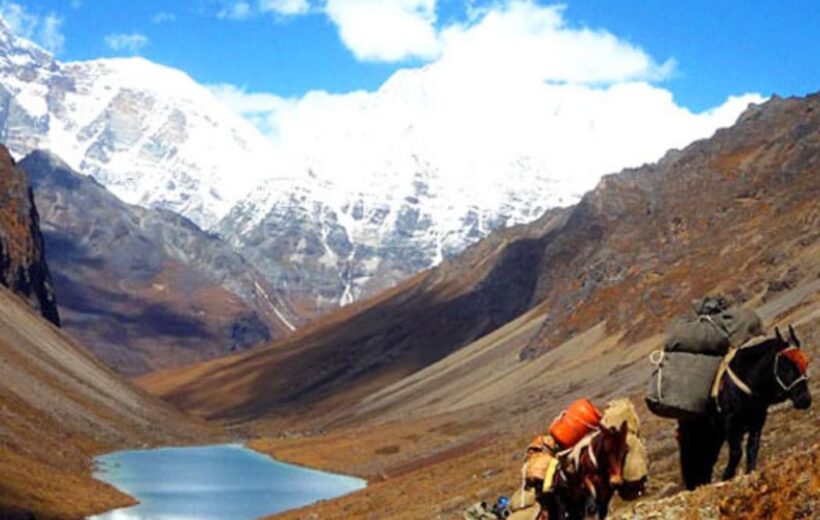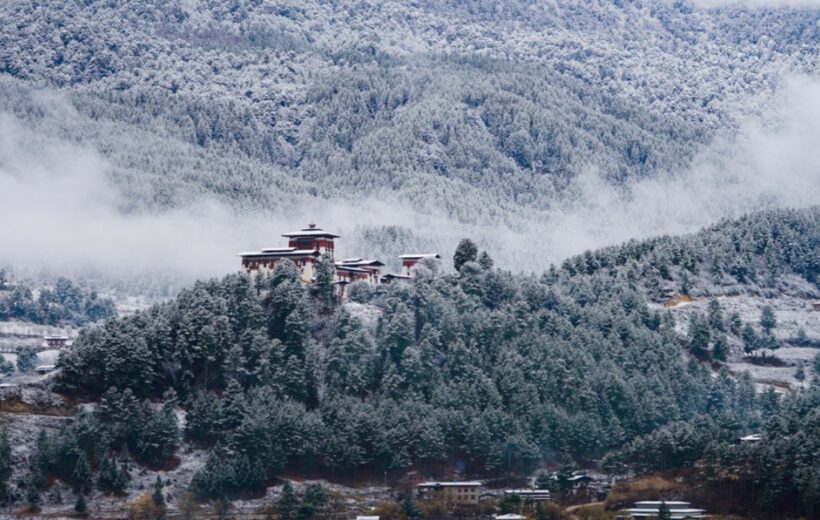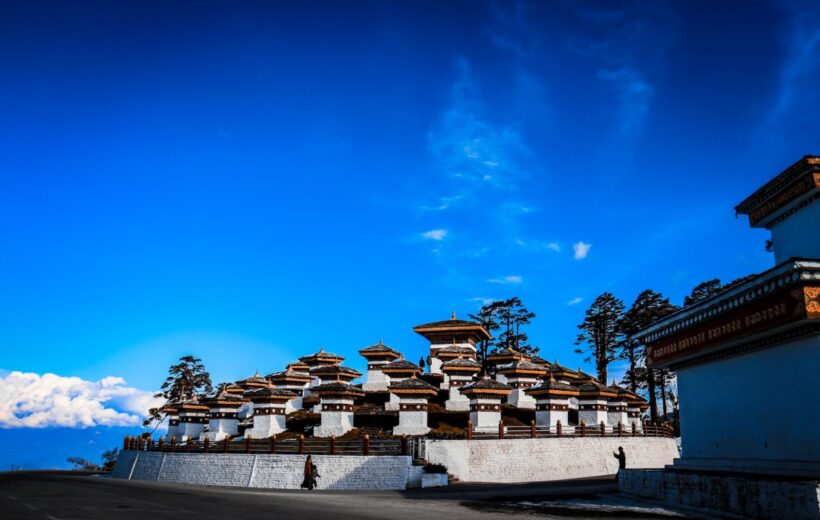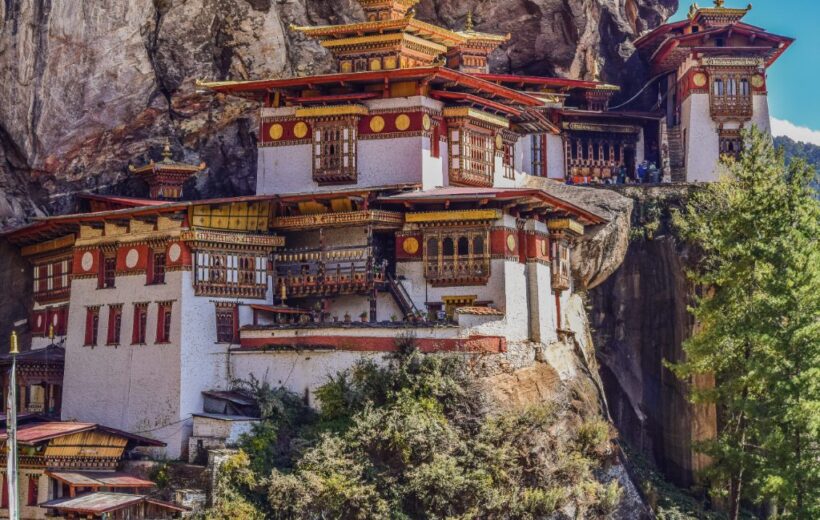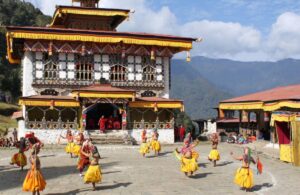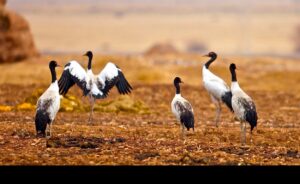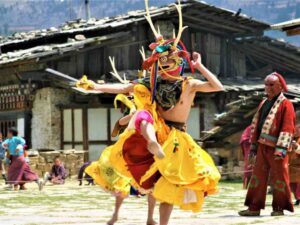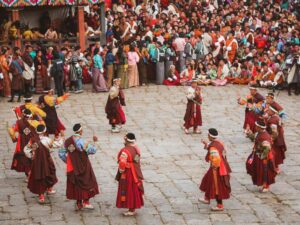Overview
This 7-day journey begins with your arrival at Bagdogra Airport, where a Bhutan WTT representative will warmly welcome you and accompany you to Phuntsholing. On Day 2, you will proceed to Thimphu, the capital city of Bhutan. Day 3 offers an exploration of Tashichhodzong and other sights around Thimphu, allowing you to delve into the rich culture and heritage of the city. Day 4 takes you on a scenic drive to Punakha via the stunning Dochula Pass, known for its panoramic views and 108 chortens. On Day 5, you'll continue to Wangdiphodrang for sightseeing, exploring its unique attractions. Day 6 brings you back to Paro, where you'll visit the majestic Rinpung Dzong, a fortress-monastery with historical significance. Finally, on Day 7, you'll depart, taking with you unforgettable memories of Bhutan's serene landscapes and cultural treasures.
Included/Excluded
- The Bhutan SDF
- All accommodations
- Meals and mineral water
- A licensed English-speaking guide
- A driver and vehicle
- Air fare
- A visa fee of US$40
- Alcohol
- Gifts/Souvenirs
- Travel insurance and personal bills
- Museums & Monument Fees
Tour Plan
Day 1. Bhutan WTT representative will receive you at Bagdogra airport. Drive to Phuntsholing
Bhutan WTT representative will receive you at Bagdogra airport. Drive to Phuntsholing, the Gateway of Bhutan. Overnight stay at hotel in Phuntsholing.
Day 2. Proceed to Thimphu.
Proceed to Thimphu. On the way visit Kharbandi Gompa, the beautiful monastery built by Royal Grandmother Ashi Phuntsho Choedron. From this point one can see the panoramic view of the Indain plains and town of Phuntsholing. Lunch on the highway. Near Chapcha the road reaches its highest point approximately 2800m. On arrival in Thimphu, check into the hotel.
Day 3. Visit to Tashichhodzong and Thimphu sight seeing.
Visit to Tashichhodzong, “fortress of the glorious religion" is the summer residence of monk body. Built in 1641 by Shabdrung Ngawang Namgyal. Memorial Chorten is another landmark, built in the memory of the Late King, Jigme Dorji Wangchuck.. Visit Painting School for age old style of traditional Bhutanese painting.National Library that houses vast collection of manuscripts and texts related to Buddhist studies. Other places of visit are the Traditional Medicine Institute and Handicrafts Emporium which displays wide variety of beautiful hand woven materials and hand crafted wood/bamboo products. Evening walk at Town area, visit local shops and mingling with people.
Day 4. Drive to Punakha via Dochula
Drive to Punakha via Dochula pass offering visitors their first glimpse of the eastern Himalayan range. Punakha was the old capital of Bhutan until 1955. Punakha Dzong was built in 1637 by Shabdrung Ngawang Namgyal. It played a prominent role in civil and religious life of the Bhutan.. Overnight at the hotel in Punakha.
Day 5. Drive to Wangdiphodrang, sightseeing in Wangdiphodrang
Drive to Wangdiphodrang, sightseeing in Wangdiphodrang town and its most visible features the Dzong situated majestically at the junction of Puna Tshang Chu and Dang Chu rivers. After lunch drive to Paro. Overnight at the hotel in Paro.
Day 6. Visit Rinpung dzong
Visit Rinpung dzong .It was built by Shabdrung Namgyal Namgyal in 1646. It is now houses monastic body and office of civil administration. It is also the venue of Paro Tshechu (festival) held once a year in spring. After that visit to Ta Dzong or National Museum which has vast collection of Bhutanese art, artifacts, weapons and stamps. A short drive north overlooking Paro river is Kyichu Lhakhang, one of the oldest and most sacred shrines of Bhutan. After lunch visit to Drukgyel dzong now in ruins. Evening at leisure and visit the local shops. Overnight at Paro hotel.
Day 7. Departure
Depart for onward destination.
Tour Map
You may like
Frequently asked question
Itinerary is always flexible if you are travelling in a smaller group. You have a choice of eating in a different restaurant, however, the menu depends on the chef and usually it is a set menu but not necessarily the same menu every day.
It is in the tourism industry but it is not compulsory. It actually depends on the service rendered to you.
Yes, things that are not included in the tariff are all beverages, telecommunications, tips, laundry, massage and souvenir shopping.
Bhutan is well connected and every town has IDD services. Internet cafes are available almost everywhere. Cell phones can also be used but you need to get Bhutan prepaid SIM Card and recharge it. Recharge vouchers are available at every second shop in town.
You can exchange money in the banks as well as in the hotels were you are staying. Rates will be better in the banks plus US$ is acceptable in almost all of the shops in town.
It cannot be safer anywhere else in the world.
Bhutan is all season tourist destination for cultural tours. However the month of February, March, April, and September, October, November are considered the best time due to pleasant weather conditions. December and January are winter months and June, July and August, the rainy season. It is important to note that the climatic conditions during the winter months are not extreme. The average temperature would range from 10-17 degree Celsius during day time.
The money you have transferred will be with held by the Tourism Council of Bhutan till the day you depart. Travel Agents can only withdraw the money after your departure upon submitting your tour invoice. Therefore, your money is safe.
It is government rule that total tour payment must be remitted without which the government will not issue the visa.
Decide the number of days you want to spend in Bhutan according to your interest and budget.
Decide the date and the port of entry (You can fly into Bhutan from one of these cities; Bangkok, Katmandu, New Delhi, Calcutta and Dacca) into Bhutan.
Fill up the visa application form (You can download the visa application form here).
Remit the total tour payment (You can download the money transfer details here). It is government rule that total tour payment must be remitted without which the government will not issue the visa.
Once we have confirmed dates, port of entry, dully filled visa application form, and money received, we will process your visa.
Except for travelers from India, Bangladesh and Maldives, all visitors to Bhutan are required to obtain visa approval prior to their arrival, which will be processed by us.
Tourism is not restricted but the minimum daily tariff is set by the government. It is also necessary that all tourists must come through a registered tour operator to plan your itinerary and process your visa. Tourist cannot come on their own unless they are invited guest.
Druk Air operates daily flight (once daily) from Bangkok (Thailand) and four flights a week from New Delhi, Kathmandu and Calcutta (India) and two flights a week from Dacca (Bangladesh). There are different flight schedules for the summer and the winter seasons. For Druk Air schedules click on Flights Details or you can also visit Druk Air web site at www.drukair.com.bt . You can also enter Bhutan via Bagdogra Airport, Siliguri (West Bengal) in India. It has regular flights from New Delhi (twice daily).
Bhutan is connected to the outside world through Druk Air (Royal Bhutan Airlines), the national carrier which is the only airline operating flights in and out of the kingdom.

